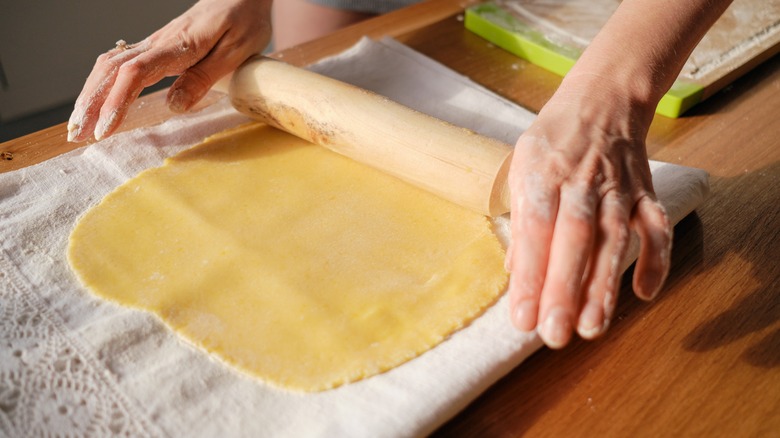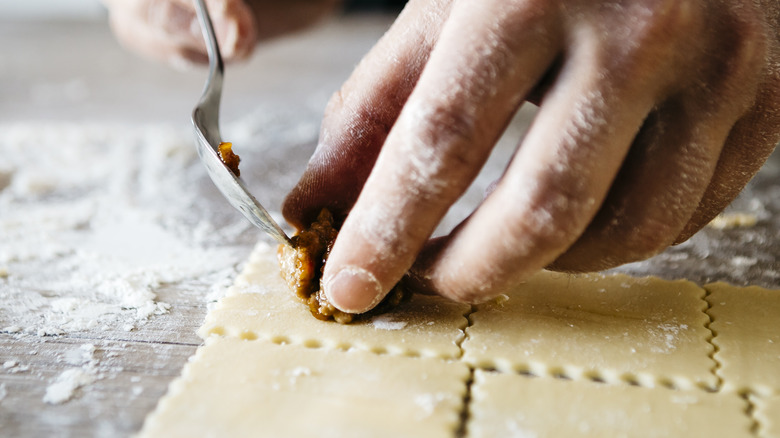What It Actually Means To Laminate Fresh Pasta
When we hear the word lamination in reference to dough, we think of buttery creations like croissants or brioche bread. Lamination is the act of rolling out dough and folding it back over itself, often with butter or other ingredients in between, to create layers of texture in the dough. The same concept applies to pasta. Though it's not thought of as a laminated product, laminating fresh pasta dough has a tremendous impact on the final product.
Laminating fresh pasta dough is different than laminating pastry dough. You really only need to laminate pasta dough at the very beginning of the rolling process. You send the dough through the machine between the first and third settings to get it flat. Then, you take the length of pasta and fold it into itself in thirds like a letter. You send it back through the machine at its widest setting and continue rolling out the dough to your desired thinness. If you feel your dough needs more lamination, continue to laminate it until you achieve your desired texture.
You're not intentionally creating defined layers as you would with pastry. Instead, you're strengthening the gluten network in the dough so that when it gets rolled out it doesn't fall apart. Regardless of how many times you do it, lamination really works to make the pasta easier to handle, have a better texture, and more heft. It all depends on the type of pasta you are making.
The importance of laminating pasta
Laminating is an important step in making pasta for a few reasons. Primarily, lamination gives your pasta extra heft and bite, which is particularly important if you're making any kind of pasta that holds fillings such as lasagna, cannelloni, ravioli, or tortellini. The stronger the structure of the pasta, the better it will hold up to the fillings, and the better it will stay together when cooked. This also stands true for pasta that needs to hold up to a heavier sauce. Even though dry kinds of pasta are best for sauces like bolognese, heavily laminated fresh pasta will more than hold up to a stronger sauce.
Laminating is also great if you want to add any additional flavors to your pasta. If you want to add herbs, for instance, you can roll them directly into your pasta dough. Simply lay the herbs out in a row, fold the pasta layers over one another, and proceed to roll your dough. The rolling will release the herb's essential oils into the pasta dough, injecting fantastic flavor before you even make a sauce. You can do this with any leafy herbs like parsley, mint, basil, or sage as well as edible flowers.
Lamination also helps plug up any holes that might have appeared in your pasta and provides it with an overall better shape. It is just a good step to add to your pasta-making regiment. Don't feel that it's strictly reserved for pastries.
Static Media owns the brands Tasting Table and The Daily Meal.

